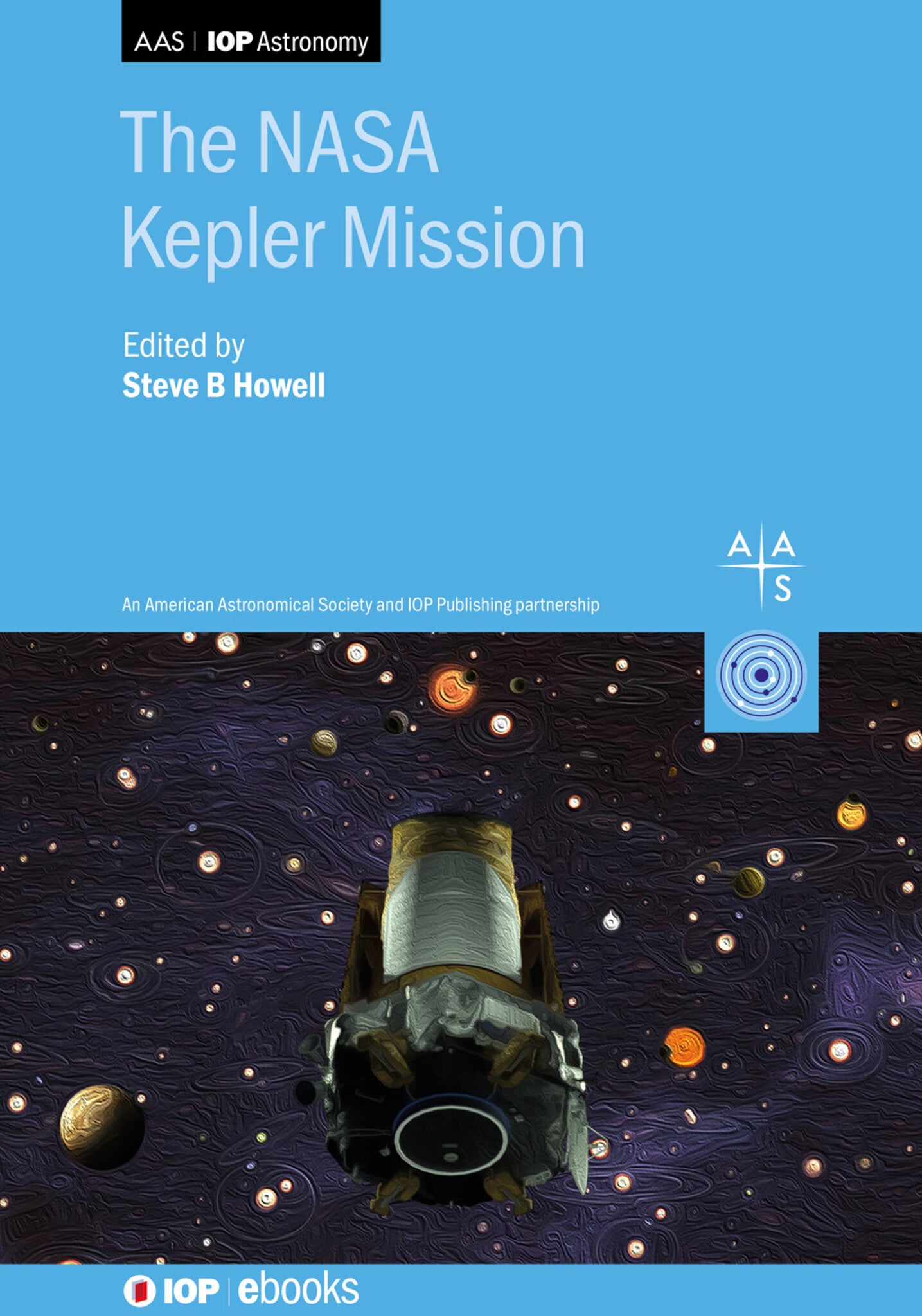We're sorry. An error has occurred
Please cancel or retry.
The NASA Kepler Mission

Some error occured while loading the Quick View. Please close the Quick View and try reloading the page.
Couldn't load pickup availability
- Format:
-
15 September 2020

The NASA Kepler and K2 missions have made fundamental, paradigm-changing advances in essentially every area of astrophysics and planetary science. While known for their breakthrough discoveries in exoplanets – especially small rocky worlds orbiting in the habitable zone of their host suns – these missions have also continued to make numerous scientific advances in solar system science, stellar astrophysics and extragalactic astronomy. This book is devoted to the Kepler and K2 missions and covers the tremendous new discoveries made in the areas of spacecraft engineering, asteroseismology, binary and variable stars, stellar astrophysics, white dwarfs, asteroids and comets, active galaxies, supernovae, black holes, and of course exoplanets of all types. It is suitable for the interested layperson, pupils of science and space missions, and advanced science students and researchers wishing for an introduction and highly focused memoir of the NASA Kepler mission and its amazing accomplishments.
Key Features
- Provides an introduction to advanced science presentations on all major mission topics
- Written by the scientists who made the discoveries
- Includes engineering and spacecraft discussions
- Describes the effects of the mission on science and the world, integrating many of the major discoveries and their graphics, movies, and materials
- Includes side boxes of interest, for example exoplanet naming conventions and perspectives from noted scientists
The text is nicely written in a somewhat personal style, easily accessible yet precise and fully referenced to scientific publications. The individual contributions are short and nicely integrated into the main text by use of text boxes, which increases the readability. It is overall very accessible, also owing to the fact that no mathematics or formal scientific training is necessarily required to understand most of the material presented.
It can be recommended to anyone with a general interest in the engineering and science of space telescopes, or more specifically with the study of exoplanets by space-based photometry. It provides an interesting and informative read about the Kepler mission for interested laypersons to experts.Manuel Vogel 2021 Contemporary Physics Taylor & Francis Group
The book is full of fascinating results from a fascinating Discovery Mission.Virginia Trimble 2021 The Observatory

SCIENCE / Space Science / Astronomy, Solar system: the Sun and planets

The text is nicely written in a somewhat personal style, easily accessible yet precise and fully referenced to scientific publications. It is supported by ample colour plots and pictures taken of and by the Kepler telescope. The individual contributions are short and nicely integrated into the main text by use of text boxes, which increases the readability. It is overall very accessible, also owing to the fact that no mathematics or formal scientific training is necessarily required to understand most of the material presented.
The book itself is a hardback and well made regarding the paper, the print and the binding. It is also available as an e-book, in a ‘mobi’ version for mobile reading devices, and offers a ‘myprint’ option for those whose institutions have already bought the book electronically, thus making a print copy available at a price of typically USD 30.
It can be recommended to anyone with a general interest in the engineering and science of space telescopes, or more specifically with the study of exoplanets by space-based photometry. It provides an interesting and informative read about the Kepler mission for interested laypersons to experts.
Manuel Vogel 2021 Contemporary Physics Taylor & Francis Group
Csaba Kiss, László Molnár and András Pál (Chapter 5) - Our works have been supported by the Hungarian National Research, Development and Innovation Office (NKFIH) grants (including projects K-119517, K-125015, GINOP-2.3.2-15-2016-00003); by the Hungarian Academy of Sciences through their Lendület Program (projects L-2009, LP2012-31, and LP2018-7/2019), Premium Postdoctoral Research Program, and János Bolyai Research Scholarships.
Armin Rest and Peter Garnavich (Chapter 6) thank ... the "Kepler ExtraGalactic Survey" (KEGS) team. KEGS was partially funded by NASA K2 grant #NNX17AI64G, #80NSSC18K0301, #80NSSC18K0302, #80NSSC19K0112.
AV (Chapter 3) was supported by NASA through the Sagan Fellowship Program executed by the NASA Exoplanet Science Institute under contract with the California Institute of Technology/Jet Propulsion Laboratory.
PS (Chapter 4) acknowledges support from NASA grant HST-GO14912 and NSF grant AST-1514737.
KLS (Chapter 6) gratefully acknowledges the support of the National Aeronautics and Space Administration through Einstein Postdoctoral Fellowship Award Number PF7-180168, issued by the Chandra X-ray Observatory Center, which is operated by the Smithsonian Astrophysical Observatory for and on behalf of the National Aeronautics Space Administration under contract NAS8-03060.
RAS (Chapter 3) gratefully acknowledges NASA K2 Grant NNX15AC97G
01 Prelude 02 The NASA Kepler and K2 Missions 03 Exoplanets 04 Stellar Astrophysics with Kepler and K2 05 The Solar System as Observed by K2 06 Extragalactic Studies from the Kepler/K2 Missions



